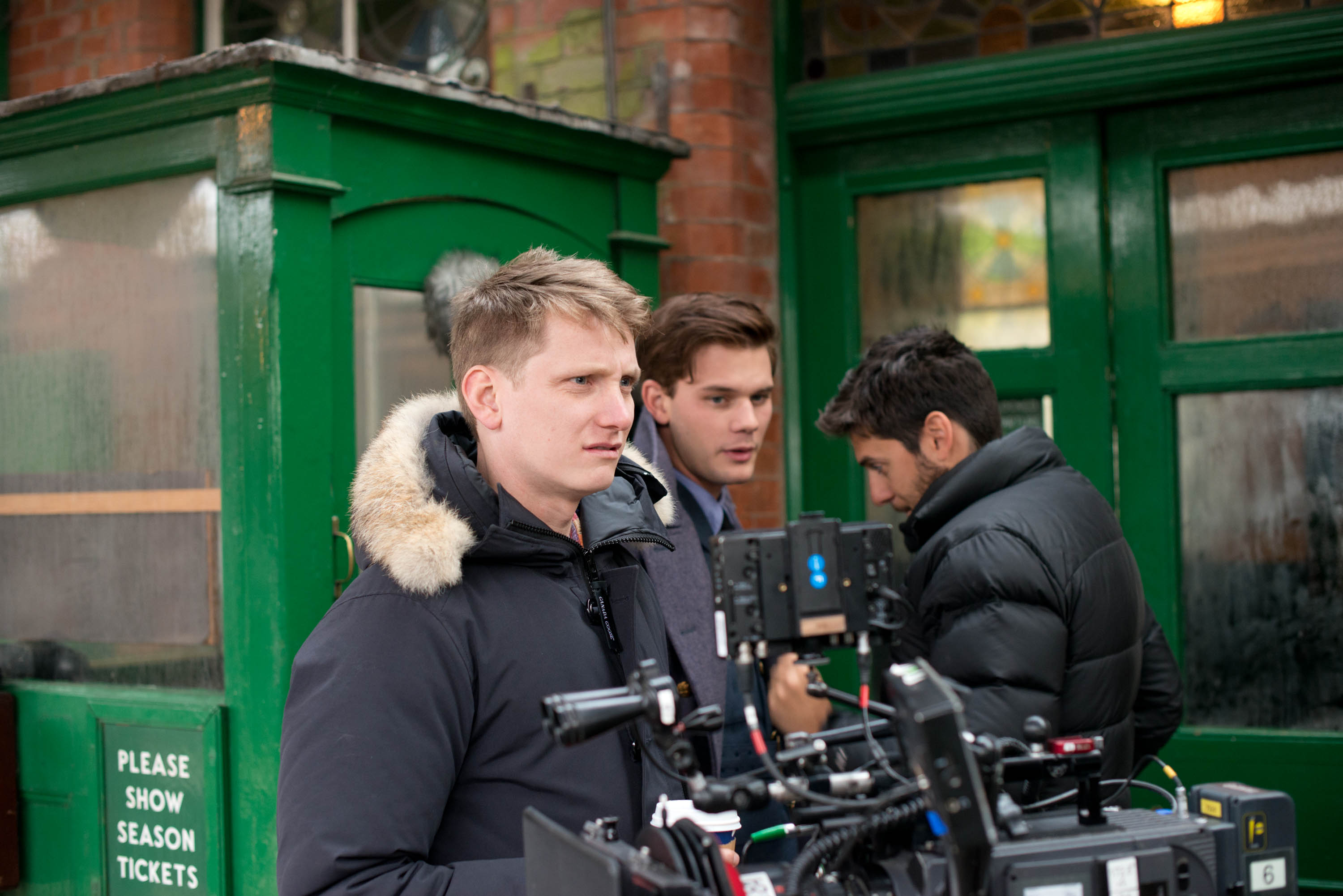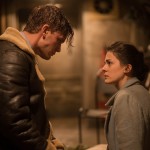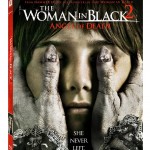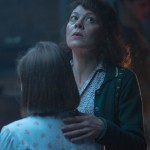“The Woman in Black 2: Angel of Death” is now available to haunt your horror film collection! The Hammer horror film is now available on Blu-ray and DVD through Twentieth Century Fox Home Entertainment and includes the featurettes “The Woman in Black 2: Angel of Death: Chilling Locations,” “Pulling Back the Veil: The Woman in Black 2: Angel of Death” (Blu-ray only), a deleted scene and the theatrical trailer.
To celebrate the release, Shockya was able to interview the director of the film, Tom Harper. In the interview below, Harper discusses the intriguing decision to set the film in the middle of World War II, the theme of motherhood throughout the film and why he feels Hammer has stood the test of time as a horror film juggernaut. Below the interview is a gallery of stills from the film and behind-the-scenes as well as an image of the film’s box art.
What attracted you to “The Woman in Black 2”?
Well, I love the book and I really enjoyed the first movie. I was approached to meet with Hammer about a follow-up movie, about what they might do next. Initially, I was a little skeptical because the first movie had a very definite ending and it’s hard to see how those characters could come back. But then, they told me about [author] Susan Hill’s idea to have it 40 years in the future…to keep the Woman in Black in the house and the mythology, but to have everything else different. I thought that was a very interesting idea and I also really liked the idea of setting it in a world war. I thought that was a very…rich backdrop[.]
That goes into my next question; the first one was such a big hit; how did you work to make this one just as good?
…Everything you ever do, most things that most people do in film or whatever they do, they try to make it as good as they possibly can. I suppose we try to take what was so great about the first movie, but move it forward and do different things with it. It was great that we had a new set of characters and embrace what was different about it, I suppose.
I love the fact that we got to do the second world war…the fact that we could take [the fact that] at the time, these children, these evacuees, were taken out of London, thousands upon thousands, and going to these far, removed places in the country. Also, the fact that [the film] tapped into something that was true, that the people know about and the fact that there kids going into the house. The myth is whenever she’s seen [sic], a child shall die. By putting children in the house, there’s a very direct and immediate threat to the loss of life. I thought that was very interesting as well, as [opposed] to when Arthur Kipps goes to the house in the first movie. As he’s not a child, he’s never in immediate danger. But in the second movie, these kids are thrust right into the middle of the lair, if you like. So that was a nice, interesting way into the horror as well.
As you’ve said before, the film is set around World War II, and you’ve already touched on this question in our last answer, but what about the setting of war makes it good for horror? I think this might be my first time watching a horror film set in World War II.
…I think this is a ghost story in the classic sense. There are a number of British authors who have a big tradition of ghost stories. Often, with a ghost story, it starts with something you know to be true, so it kind of expands itself from that. You know, like you’ll start with my grandma knitting and reading late into the night, and you go, “Well, of course he knows his grandma,” and you describe the living room and then there was bump upstairs and she took a poker from the fire, or whatever. If you’re blending fact with fiction, it makes it…scarier. I think Freud called it “The Uncanny.” It’s like what you know, but it’s a little bit off. That’s what I think you get from the second world war. We know this group of kids was evacuated from London. We know they went to far off places in the UK…there’s something about it that adds a…validity to it. I don’t know how true that is, but I think it’s a nice theme and certainly a nice starting point.
In one scene, the headmistress character [Jean Hogg, played by Helen McCrory] is explaining how she deals with the trauma of war and she says, “Our own worst enemy is ourselves.” I thought that was interesting, especially in this film when people’s own pasts and fears are getting the best of them. What do you think about that particular line as it relates to the movie?
I think that’s very true. I think all horrors are based on human fears…and certainly how that relates to the narrative is the fear of losing a child[.] All of Eve’s horror comes from the fact that she thinks she could have done something about it [losing her own child]. That’s where it comes from. That’s why the Woman in Black haunts her and the battle between Eve and good on one side and the Woman and Black and evil on the other side. Edward and the fight and struggle for Edward helps her overcome her fears and her internal struggle. I think that’s a key motif in the film.
Motherhood, as you were alluding to, is a very big theme in this as well. What do you make about that theme being prevalent in the film?
…I think it’s nice to have a female protagonist and a female lead, and it taps in nicely to the Woman in Black and her own trauma and her own backstory. She lost a child and she wants revenge for it. That’s the myth. And the fact that Eve has a similar thing is what it binds it all together, I suppose. Again, it goes back to the struggle between these two women and for Edward to save them, I suppose.
One thing that I really found fascinating about the motherhood aspect was, going back to what we were saying about reality, the film really does have a strong reality in how motherhood can be good, but it can also become dangerous in a way. For instance, how a lot of women have dealt with post-partum depression and other types of mental issues after giving birth or feeling guilt over whether they’re a good mother or not. To me, that tied me into the story and makes it a lot more of a tragedy for me.
I think [Eve] questions her own sanity about it and she has these recurring nightmares about it…She’s deeply affected by the trauma of her past and I suppose that’s the thing she’s battling with. More or less, I think, in the course of the movie, I think she’s come to terms with that. She’s fought her demons anyway in a literal and metaphorical sense.
Hammer horror films have been such staples in the horror landscape in both America and the UK. What do you think makes Hammer horror so popular and intrinsic to the horror genre?
That’s a really good question…they’ve made so many films over such a long period of time…they’ve obviously made some classics, but they’ve also made some really out there, spooky type films…I think they’ve come back and they’ve just been a brand. They’ve been so passionate about making horror films for such a long time that I think people tap into that. I’ve grown up with them and can still see them today. There are so many companies that haven’t gone the distance and they have. They’ve done one thing well for a long period of time and I think that’s quite rare.
(Photo credit: Nick Wall)





